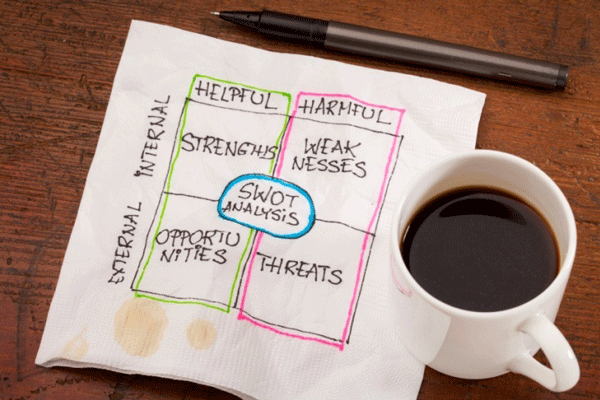
“Strategy without tactics is the slowest route to victory. Tactics without strategy is the noise before defeat.” — Sun Tzu
An old riddle says seven frogs sat on a log on the edge of a pond. To cool off, four frogs decided to jump into the pond. How many frogs were left on the log?
sme’s chat with phillip chichoni
The answer is seven. Why?
The four only “decided” to jump. There is a big difference between merely deciding to do something and actually doing it. Dreams, goals, intentions, plans and resolutions are not worth much unless we act on them. At the beginning of the year, many entrepreneurs think of plans of how to grow their businesses and do better than the previous year. Unfortunately, as the pressures and challenges of running a business in a turbulent and hostile environment bear down, the majority of business owners forget about their plans and focus instead on daily survival. It is even worse when the plans are not written down.
A strategic plan that is not written down is much like a dream that is quickly forgotten when one wakes up in the morning. This article is intended to help guide entrepreneurs into developing properly written strategic plans that will work.
Motivational speaker and author Les Brown wrote that the graveyard is the richest place on earth, because it is there that you will find all the hopes and dreams that were never fulfilled, the books that were never written, the songs that were never sung, the inventions that were never shared, the cures that were never discovered, all because someone was too afraid to take that first step, keep with the problem, or determined to carry out their dream.
The one big single factor that separates average entrepreneurs from highly successful entrepreneurs is having a clear strategic plan for running and growing their businesses. In these challenging times, you certainly need a strategic plan in order to ensure the survival and growth of your business.
- Chamisa under fire over US$120K donation
- Mavhunga puts DeMbare into Chibuku quarterfinals
- Pension funds bet on Cabora Bassa oilfields
- Councils defy govt fire tender directive
Keep Reading
One way to think about strategic planning is that it identifies any gaps between a current state and desired future state, and then dictates how to close those gaps — how to get you from where you are to where you want to be. To that end, various factors are taken into consideration in order to formulate an effective plan. Here are the key elements often included in a strategic plan.
Introductory statement
If you include an introductory statement, it should briefly describe why the strategic plan was developed and for what time period, plus the authors of the plan.
Background statement
This section may provide information about the organisation such as its history, management structure and supporting partners or agencies. Alternatively, you could use this section as a brief business statement — more of an elevator pitch — to concisely describe your business. Organisational structure
Include this information if it is relevant to evaluate how your business or organisation operates and is structured — from the directors to staffing.
Vision
A vision statement should briefly describe what a company wants to achieve or become. This is one of the primary organisational tenets to consider, along with values and mission.
Values
These are the principles that an organisation stands for and abides by. Many businesses create core value statements to guide company culture.
Mission statement
A mission statement describes the purpose of a business or organisation. This is distinct from a vision statement because it is not a projected goal for the future.
Problem statement
Some plans include a problem statement, which can outline key or discrete issues that need to be addressed.
Swot Analysis
A Swot analysis provides a foundation and context for developing strategy by examining the strengths and weaknesses within an organisation as well as external opportunities and threats.
Goals
A strategic plan may include long-term as well as short-term (monthly and quarterly) goals. Objectives should be measurable and broken down into actionable steps, and the action plan for each goal should specify who is responsible for implementing the strategy, a timeline for starting and ending the action, and how the outcome will be evaluated.
Evaluation
Methods for evaluation should be spelled out in the strategic plan. This could include tracking key performance indicators and documenting the progress of action steps on an ongoing basis.
Executive summary
This final summary helps employees, investors or other readers quickly understand your plan.
After you have developed the written strategic plan for your organisation, the next most important task is to execute it. A strategic plan is not a once-off document. It does not have to be perfect before you start executing it. Famous general George Paton said a good plan ferociously executed now is better than a perfect plan executed next week. So get started now and jump off the log.
Phillip Chichoni is a business development consultant who works with SMEs and entrepreneurs. His new book Business Survival Amidst Turbulence is now available. You may contact him by email, [email protected]. You can also visit his blog http://chichonip.wordpress.com











